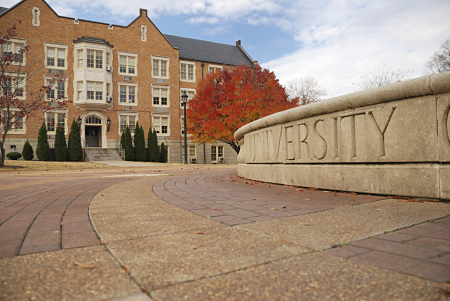Americans are driving less. In the 10-year period from 2004 to 2014, Americans drove less each year than the year before.

Over that decade, average miles fell nearly one percent each year.
And now comes the ride hail industry with the likes of Uber and Lyft and a crowd of copycats trying to grab their share of a multibillion industry.
College campuses have proven to be a fertile ground for rideshare companies and programs.
At the University of Indiana, students use SPUZ, a new rideshare service for students to pick up other students on campus.
SPUZ runs as a business, rather than a free service. Students have some free services, such as the Saturday Night Owl bus, which runs from 10 p.m. to 3 a.m. on the weekends.
IU Safety Escort is another free option for students looking to get home. Safety Escort takes students home from campus or their place of work for free. They currently give rides to about 70 to 100 students every night, said Carter Myers, IU Safety Escort associate director.
“I think a lot of our riders are perfectly aware of services like Uber,” Myers said. “But in terms of safety, I think maybe they feel better with a campus organization like us.”
At Santa Monica College in California, the college and Uber recently announced a new partnership to promote carpooling as a viable method of transportation for students, staff and faculty.
The new partnership has created dedicated drop-off/pick-up locations on campus, provided financial incentives to try the program and is contributing to a new environmental studies scholarship on campus.
Ferris Kawar, sustainability project manager for SMC, said the college has a history of promoting alternate transit options, including past efforts to promote carpooling, but the new program capitalizes on existing student behavior.
“Students were using Uber for social meet-ups, taking it out on a Friday night or a Saturday,” Kawar said. “We said let’s harness that power that Uber has created, which is using technology to know where one person is and where they want to go and match it up with other people that are on the same path.”
With uberPool, riders share a ride – and the cost – with others who happen to be traveling along a similar route.
Michael Amodeo, with Uber’s public affairs division, said the company can see that many Uber trips have a “lookalike” trip – a trip that starts near, ends near, and is happening around the same time as another trip. He said most of these trips transport one or two passengers, leaving up to three empty seats. With uberPool the company can match those lookalike trips together, reducing the cost to all passengers while adding minimal time to the ride. The system also benefits drivers who spend more time per hour earning money on longer trips without the downside of waiting between passengers.
Kawar said the college is offering a financial incentive to first time riders that is having a measureable impact beyond the first ride.
“We’ve actually found there was a really high rate of redemption, using that code to try it for free for the first time,” he said. “After it was used for the first time, there was a 70 percent repeat rate so we’re seeing a pretty high usage of uberPool specifically.”
He said the system is one of several SMC promotes.
“It’s just another tool in our tool box of things people can use,” he said. “It’s not going to always work for everyone. We’ve got Expo opening up, Big Blue Bus, our shuttles connecting the campuses, we also have traditional carpool and vanpool hookups and we have a website where any student or staff member can log in and insert a home address and then the school address and be given personalized transportation options. “
At the University of Cincinnati, Zimride and Zipcar have taken hold. With Zimride, UC drivers or passengers can log in to UC’s private Zimride network to discover opportunities to share daily commutes or weekend trips. By connecting drivers and passengers, Zimride saves money while reducing the number of vehicles making trips to and from UC.
UC is also expanding its Zipcar car-sharing service. Peter Moorhouse, UC Sustainability coordinator, says two additional Zipcar sites are now in the planning for the Academic Health Center as part of the renovations and construction around the Kettering Lab Complex and Joseph F. Kowalewski Hall. Zipcar maintains 24-hour access for students, faculty, and staff over 18 years of age to reserve a car by the hour or by the day. It provides the convenience of a car without the hassle. Membership is open to all UC faculty, staff, and students.
Zimride can also be found on the University of Mississippi campus where students and employees are looking to save money by carpooling and reducing their carbon footprint.
The Zimride website allows others traveling in the same direction to connect for a carpool commute.
“We would like to encourage the concept of carpooling since many UM employees live outside of Oxford and have a 20-to-30-minute commute,” said Hal Robinson, manager of transportation and parking services. “It helps save money, helps reduce traffic, reduces parking congestion and reduces the carbon footprint of the university.”
